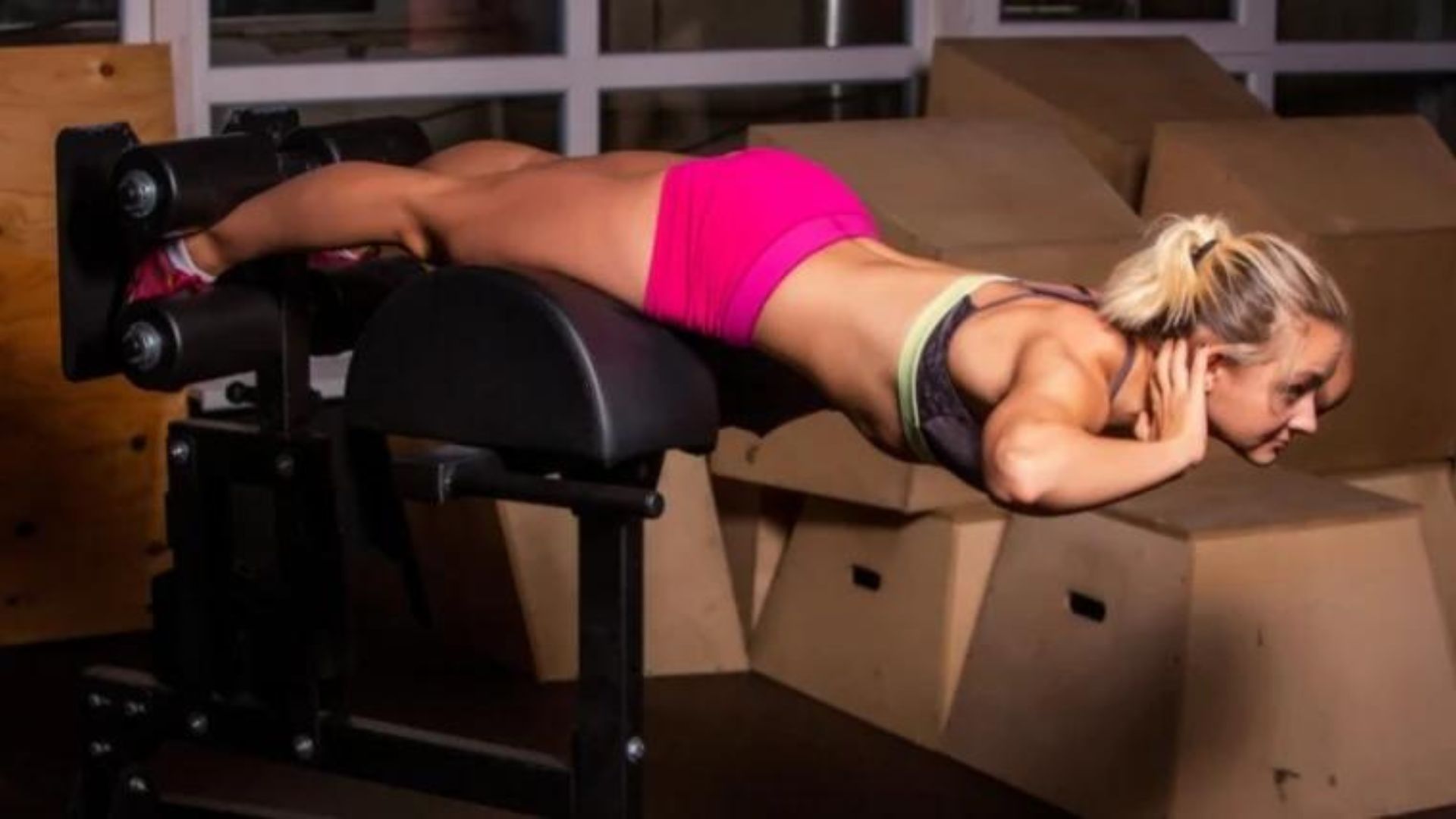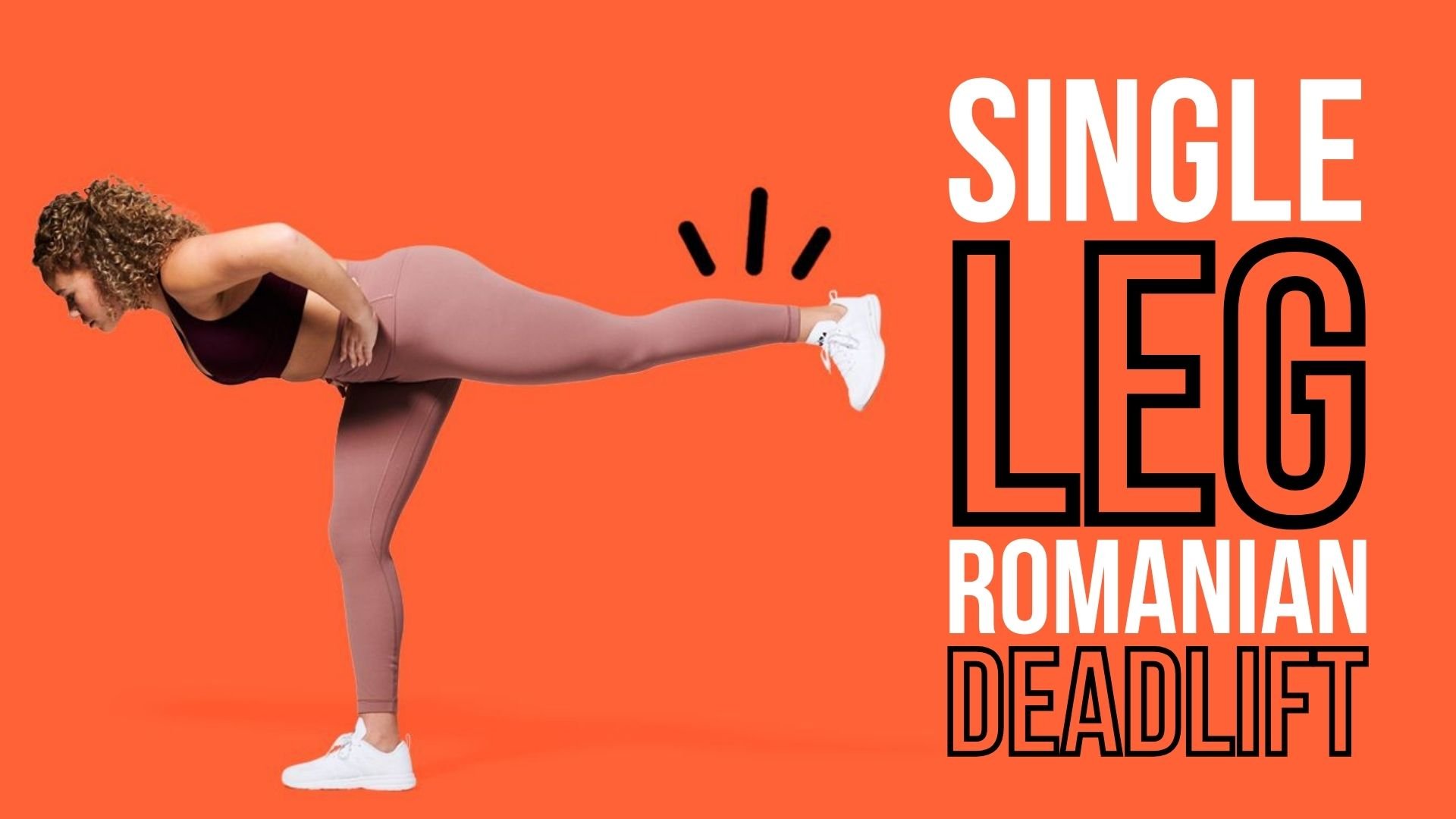
Build Stronger Legs with Single Leg Romanian Deadlifts
Unilateral leg training is beneficial for nearly all athletes.
Suppose you include such movements in your training program.
In that case, you can expect to see improvements in neuromuscular control, joint function, muscular hypertrophy, endurance, and joint and muscle function (e.g., the single leg Romanian deadlift).
This article will explain how to perform single leg Romanian Deadlifts correctly, the progressions and adjustments that can be made, and why they are so crucial for hip function.
What Is A Single-Leg Romanian Deadlift?
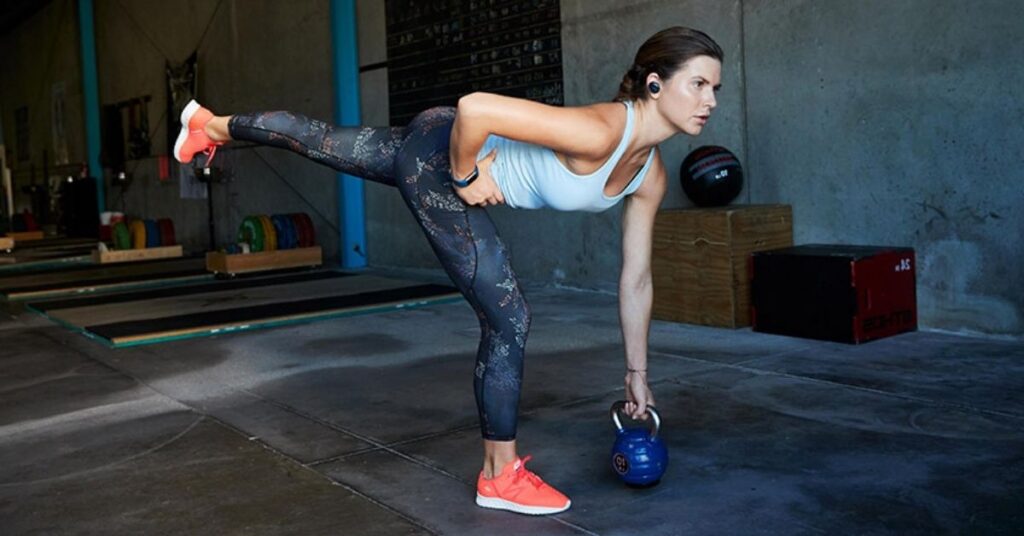
Single-Leg Romanian Deadlift (Single Leg RDL):
This is a vertical hip hinge exercise involving standing on one leg and holding your hips.
Then, you lower your torso to almost parallel to the floor.
Single-leg RDLs with bodyweight work the posterior chain.
This includes your glutes and back, hamstrings, calves, and glutes.
You’ll be able to challenge your traps, lats, and forearms and increase your strength in your anterior core, erectors, and scapula stabilizers by adding weight.
The single-leg RDL requires stability in the ankles and core and the knees, hips, and hips.
How To Perform The Single-Leg Romanian Deadlift: A Step-By-Step Guide
This step-by-step guide will show you how to perform a single-leg Romanian Deadlift.
These can be done with dumbbells, barbells, or kettlebells.
Step #1
- Place one foot on the ground, and balance with the other.
- Keep your pelvis forward and your ribs lower.
- A slight bend can be made in the base knee (left leg in the image below).
- This will make it easier to transition to step 2.
Coach’s Tip:
Don’t stress about lifting your right leg.
Instead, keep your hips aligned and even throughout.
Step #2
- Your hips should be pushed back like a bilateral (two-egged) deadlift.
- It is essential not to allow your hips to rotate upwards (right side of the picture).
- The belly button should face the ground with the left knee bent slightly.
Coach’s Tip:
This should be felt exclusively in the hamstrings and glutes (left side of the picture).
If you don’t feel this, your lower back may be round, or you might be leaning forward.
Step #3
- After you have mastered the stretch of your hamstring, make sure to keep it under control.
- Once you reach the bottom, resist the temptation to lose your spine/back/hip strength.
- Do not lift your back and load the hamstrings.
- Once you are ready to go, stretch your glutes as hard and as long as you can.
The Single-Leg Romanian Deadlift: Benefits
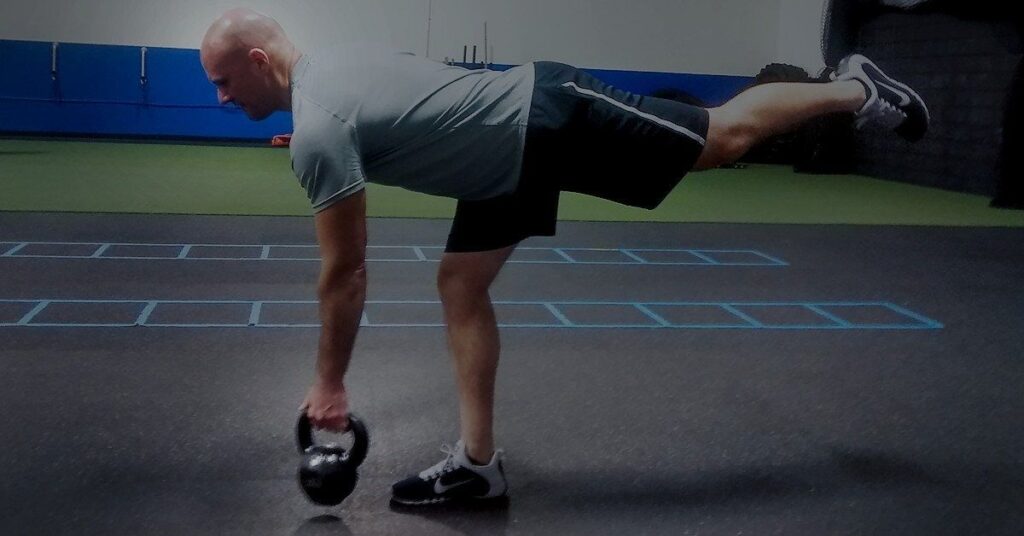
Two-footed, old-fashioned deadlifts work the glutes, hamstrings and increase muscle size, strength, and power.
The single-leg Romanian deadlift isn’t as stable.
It can be loaded heavier due to its lower weight.
Still, it has many other benefits comparable to the classic deadlift, or at the very least, offers less risk of injury.
Balance And Coordination
Standing on one foot activates the muscles below the knee and the hip to prevent you from falling.
Your feet may feel hotter on higher-rep sets as you try to balance.
You’re not only training stability on one side, which is particularly important when you play sports like running or jumping, but you are also working on your hip hinge.
You will be able to extend and flex your hips more powerfully one at a time and run faster, jump higher, and change direction quickly if you do this.
Stronger Posterior Chain
Single-leg RDL uses the same muscles as other deadlift variations.
This means that you will get an excellent workout for your glutes and hamstrings.
You’ll be able to train them with a broader range of motion than on bilateral deadlifts.
Single-leg lifts allow your hips to bend more, which activates more of your hamstrings.
The single-leg RDL is an excellent choice for bulk building programs because it allows you to lose weight while increasing your range.
Mobilization Increases
Single-leg RDLs allow you to move in greater ranges of motion.
This is great for increasing mobility and strengthening your hamstrings.
To loosen your hips and hammies, trainers recommend single-leg RDLs for bodyweight.
This move is also great to do on your down days as part of a mobility program that aids in recovery from work.
Yoga practice will show that standing-split poses such as warrior are essentially single-leg Romanian deadlifts.
Better Posture And Body Mechanics

The single-leg RDL, like yoga, can help you move and transport your body better.
For safe exercise, it is vital to learn how to properly hinge.
Your lower back will bear the brunt of any weight you lift, leading to injuries.
Bad hinge technique can lead to injury during heavy bilateral deadlifts.
You can see the time bombs in your gym if you look at those who deadlift with a round back.
You will notice if your hinges are not correct during a single-leg Romanian Deadlift.
It will feel in your back, and you’ll lose your balance.
The single-leg RDL can be a powerful teaching tool.
This also forces you to bring your shoulders back into a “proud ch” position.
This improves your posture, which makes lifting safer and more efficient.
It also makes you look healthier and more robust.
Anti-Rotation Core Stability
Your body will immediately notice if you are standing on one leg.
Bend your hips to the side where you can see the floor.
Your torso will tend to turn toward the side without a support leg.
To prevent this rotation, your core muscles must work hard.
The single-leg RDL is a core exercise involving a leg and back movement.
You have made a massive step towards preventing lower-back injuries by developing the ability to resist rotation.
Restores Muscle Balance
Many people often avoid unilateral training because it can be challenging (and less soothing for the ego) since you cannot lift as much as if you lift with both legs and arms simultaneously.
They can develop muscle and strength imbalances.
In other words, the more vital limb will take over the weaker one.
This is especially common in the lower body.
You might notice your hips shifting to one side when you squat, deadlift, or make 10 lunges with one leg, but only eight reps with the other.
These imbalances can be corrected with the single-leg RDL.
What Muscles Are Used In Single-Leg Romanian Deadlifts?

The short answer to this question is “most of them.”
However, we will list the most important ones that you’ll feel here.
- Glutes
- Hamstrings
- Lats
- Beware of Traps
- Spinal erectors
- Obliques (core)
- Flexors for the forearm
- Calves
- Peroneus longus (outer shin)
- Posterior Tibials (in the foot).
Who Should Perform Single-Leg Romanian Deadlifts?
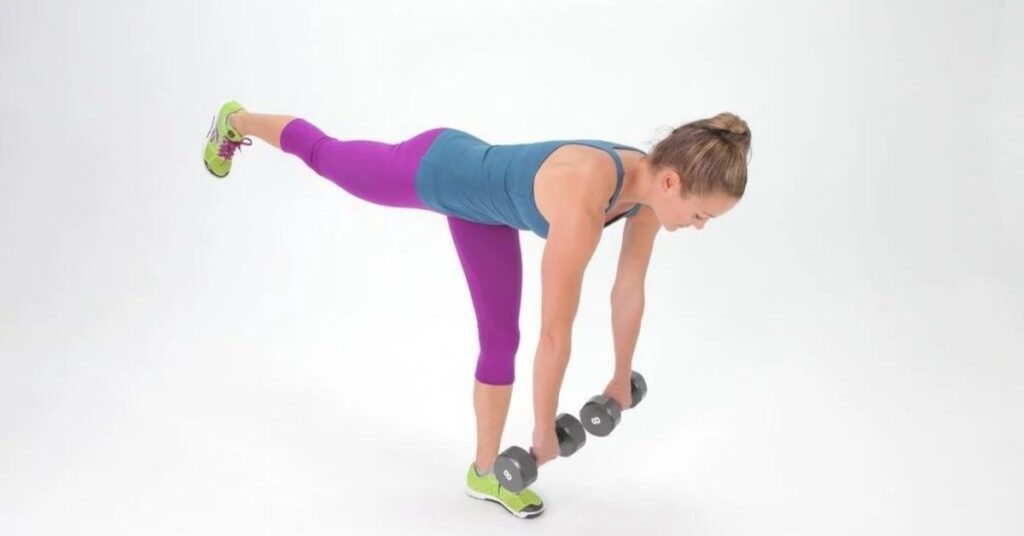
Single leg Romanian deadlifts are unilateral lower-body exercises that increase hamstring strength, performance, and health.
Strength And Power Athletes
Power and strength athletes can reap the benefits of increased unilateral strength and performance.
This can help improve muscle health during bilateral movements like deadlifts.
- Strongman athletes and powerlifters: These athletes depend heavily on their hamstrings for pulling strength and performance. Single leg Romanian deadlifts are a great unilateral exercise that can improve hamstring health muscle hypertrophy and promote symmetrical movement patterns.
- Olympic Weightlifters: Strengthening your hamstrings can improve your ability to pull strength, hip function, and endurance in the sport. This is similar to powerlifting or strongman athletes.
General And Functional Fitness
These benefits are not the only ones.
Unilateral training can also help increase hamstring strength and development, correct movement imbalances, and reduce the risk of injury.
Watch Out For These Mistakes:
- As you turn your hips towards one side, bend them back. Imagine pulling your hip flexors (the muscles at the front of your hip that lift your leg up) down so your hips bend like a hinge. Throughout the exercise, your hips and shoulders should be straight ahead.
- Rounding your lower back. This is a bad idea. This is a bad idea.
- Smitty advises that you don’t rock back on heels or come up on your feet. This could indicate tightness in your hips.
- To reach the floor, twist your torso. Your shoulders should be in line with your hips.
What Is The Single Leg RDL?

You will notice that many of our daily activities and athletes’ movements in their sport require us to take a split-stance position.
To perform the movement effectively, we must rely on the other side of our bodies to adjust to this position.
The first reason is that single-leg training is more functional.
Single-leg training allows us to address any mobility or strength issues the body may have.
Many people are dominant on one side (right or left).
For relatively inactive people, this may not be an issue.
This imbalance can lead to poor performance and injury for athletes or regular exercisers.
Single leg training has many benefits, including the ability to balance (keeping your center of gravity in place).
Balance is essential for everyday activities and sports.
Balance exercises that require you to balance on one leg and strength-training machines using both legs simultaneously are not as practical as those that require you to use both.
Single-Leg RDL challenges and improves balance more efficiently.
Single leg exercises such as the Romanian Deadlift put more strain on the hip, ankle, and knee joints.
This makes them less susceptible to injury and more stable.
Single Leg Romanian Deadlifts Sets, Reps, and Programming Recommendations
Here are three main training goals and programming suggestions for single-leg Romanian deadlifts in training programs.
Movement Integrity – Reps And Sets
These are sets and repeated recommendations that will improve stability and balance in this unilateral movement.
- 4-6 sets of 5-8 repetitions
- To help maintain a flat back and proper hip hinging, it is helpful for the lifter to hold a PVC pipe (spine angle) along their back.
Hypertrophy – Reps And Sets
Here are some sets and repetition suggestions to increase hamstring hypertrophy.
- 5-10 sets of 8-15 repetitions
- The rear-foot elevated variation excels at hypertrophy because it allows for more load (less balance required) but still trains the hamstring unilaterally.
Strength – Reps & Sets
Although maximal strength training with unilateral exercises can be slightly riskier, some coaches will heavily train the hamstrings with more experienced athletes.
- 4-6 sets of 3-8 repetitions
- Loading shouldn’t limit your range of motion or compromise spinal integrity. If the goal is a maximal hamstring and posterior chain strength, stick with bilateral movements until fully developed stability and unilateral coordination/strength. You can still load unilaterally, and you should. However, it is possible to train with more manageable loads (see hypertrophy section).
Variations Of Single-Leg Romanian Deadlift
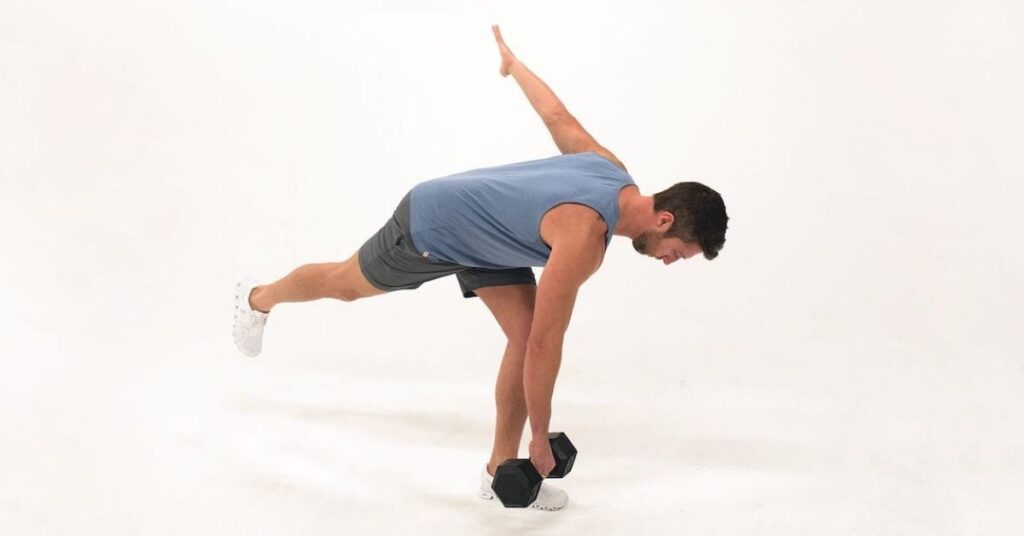
Here are three single-leg Romanian deadlift variations you can do to increase strength, size, and overall muscle growth.
#1 Eccentric Single Leg Romanian Deadlifts
An eccentric SL RDL can increase eccentric strength and muscle coordination unilaterally.
Although the eccentric side can be trained in a regular SL DL, the extra emphasis on eccentric lowering the load can cause significant muscle damage and increase muscular hypertrophy.
#2 Tempo Single-Leg Romanian Deadlift
You can increase the time under tension, improve concentric, eccentric, and eccentric muscle coordination, and improve movement awareness and patterning for lifters.
#3 Single Leg Romanian Deadlift With Rear-Foot Leg Elevated
Single-Leg Romanian Deadlift Alternatives

Here are three single-leg Romanian deadlift options that can be used to challenge or vary programming.
#1 One Leg Stiff Leg Deadlift
The SL RDL is very similar, but the lifter places the knee in a more flexed position.
This allows you to increase the loading on the hamstrings.
However, it does require more flexibility in the hip and hamstring.
#2 Single Leg Hip Thrust
A unilateral glute exercise, the single-leg hip thrust, can increase glute engagement and hip extension.
Lifters might not be able to properly hinge at their hips.
The single-leg hip thrust is a significant regression to help develop these abilities.
#3 GHD
You can do the glute-ham development unilaterally or bilaterally.
It targets the same muscle groups that the single-leg Romanian deadlift.
This exercise is excellent for strengthening the muscle’s coordination and eccentric strength.
Last Words
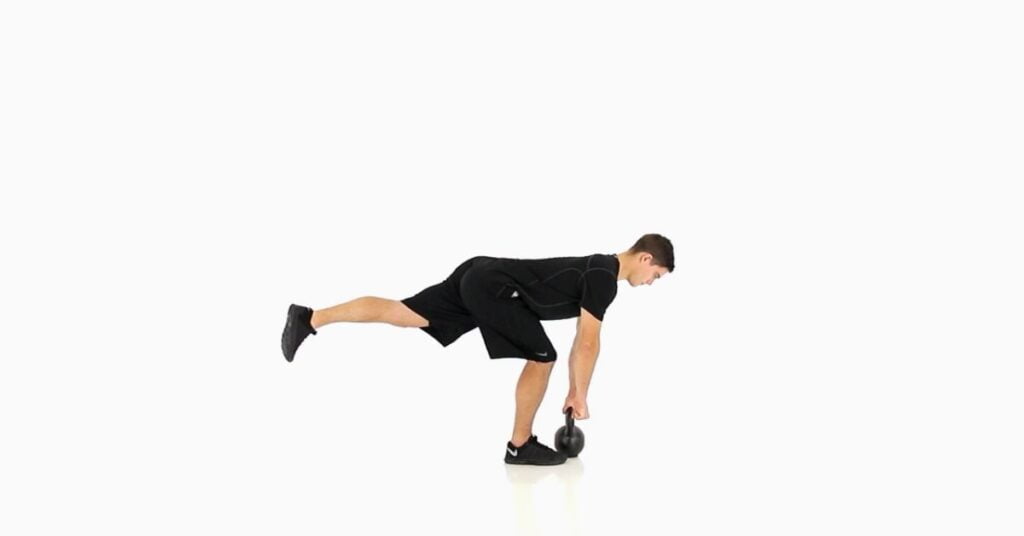
Unilateral training exercises such as the single-leg Romanian deadlift can improve movement patterning, joint health, and muscle function during complex movements.
Athletes and coaches should not sacrifice movement mechanics to load, especially when using movement-based exercises like this.





